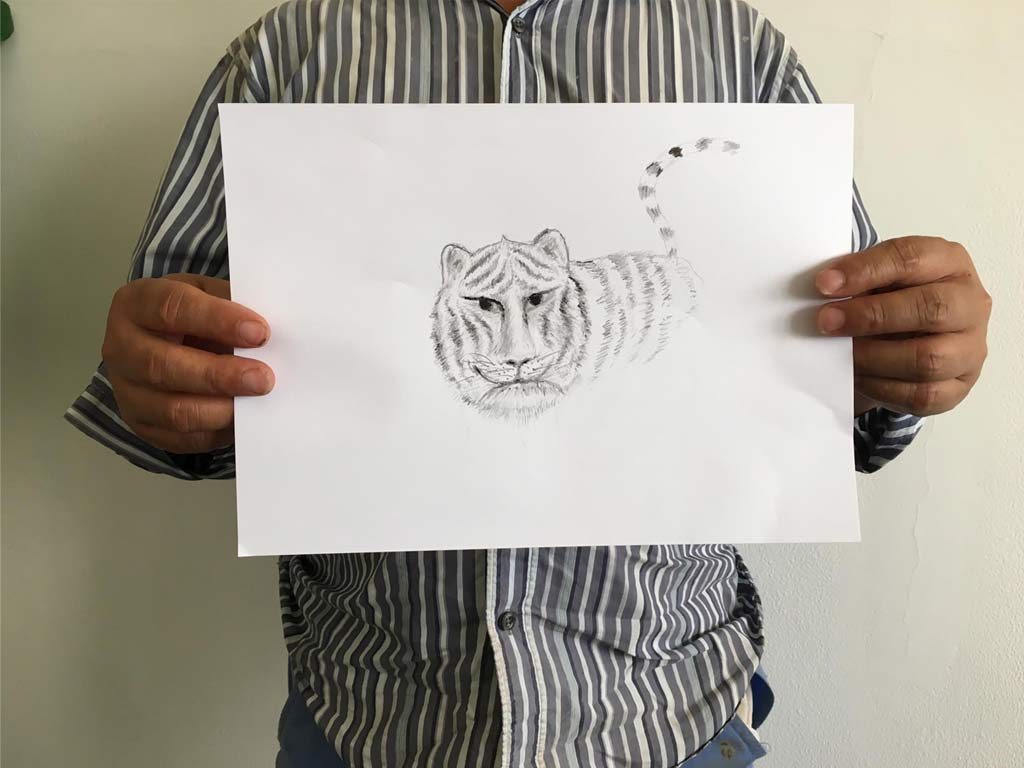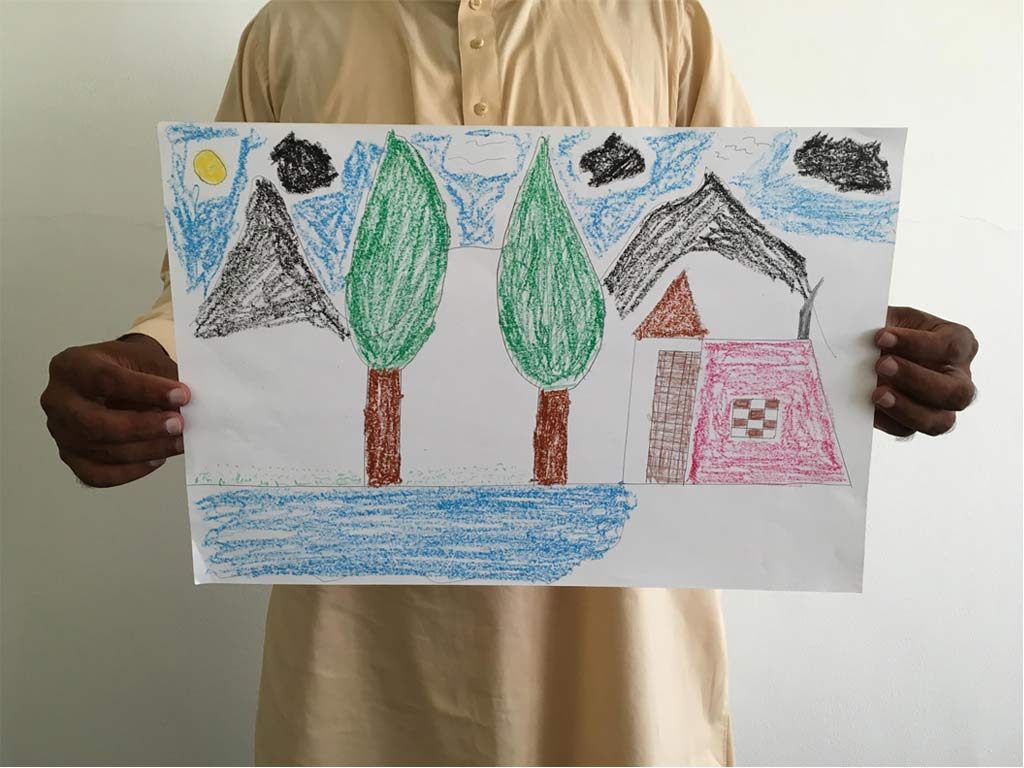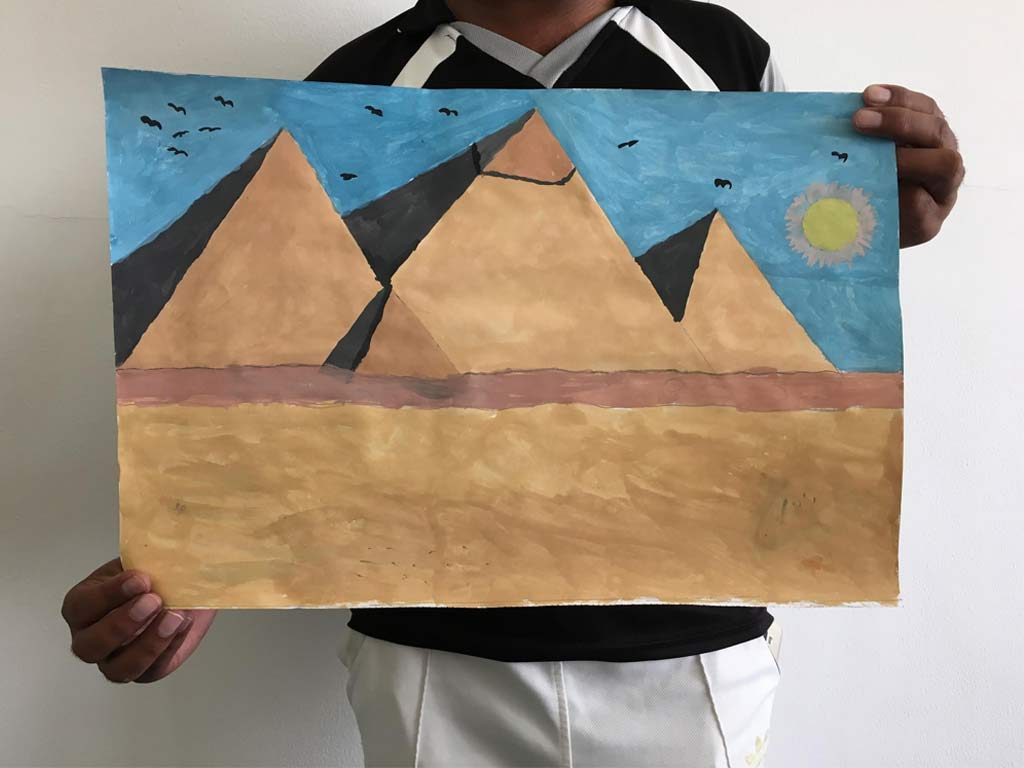This summer, Mariam Halawani, the founder of the movement Art For Thought, and a student of art therapy at New York University, decided to conduct an interesting set of exploratory workshops in Dubai that broke down rampant classist convention.
In sessions spanning two months, blue-collar workers from an unnamed Dubai labor camp were invited to put brush to paper, ease their minds and find a healthy emotional outlet.
According to this 2016 Gulf News report, there are over 500,000 laborers working on Dubai construction sites.
Often [and unfairly] overlooked, they live away from their families for months, originally migrating to the UAE in search of financial stability and a better future. They send money home, keeping little of their pay check for sustenance every month. Most of them come from poor countries like Indonesia, India, Philippines, Bangladesh, Sri Lanka and Nepal, according to HRW.
Since they are not highly educated, language can be a barrier in connecting with them. Enter art – a form of communication that requires no words.
Mariam got the idea when she participated in a workshop with a similar format by The Sameness Project, called ‘Restart the Art,’ where she collaborated with a worker to produce a single work of art.
A firm believer in its healing properties, she set out to create a culture of art in labor camps.
To understand why she chose laborers, one only has to look at the physical setting. Living conditions are less than ideal, with cramped and overcrowded rooms and no private space. In addition to the strain of living away from loved ones, the highly demanding hours of a manual job can take a clear toll on mental health.
At first, many of these laborers met the art proposition with hesitance and suspicion, while some were excited to partake in something different. Over time, however, things changed: They began to open up.
An honest and beautiful group dynamic formed among us. The sessions were voluntary, but most of the laborers consistently attended each week. By termination, the group expressed feelings of sadness regarding the separation, but together, we were able to talk about and process those feelings.
Bearing in mind the varied origins of workers in a typical labor camp, this group dynamic is encouraging to consider. Mariam tells us the nature of the sessions:
“There were no judgments or expectations, which according to the workers, was a very different experience from their daily lives.”
Despite the relatively short duration of workshops, the judgment-free space had notable effects on their mentally and physically stressful lives. While Mariam wasn’t looking for extraordinary artistic work, she was closely involved in observing what the process offered to the artist:
“The workers were often surprised as they realized the extent of their abilities. It was truly moving to see that kind of confidence being restored,” she shared.
Sounds uplifting, doesn’t it?
At a basic level, through art therapy, a person can vocalize difficult or painful emotions, regain control and mastery of thoughts and emotions, enable change or reach acceptance.
“There are countless ways in which art can promote better physical, psychological and emotional wellbeing. Those few lines definitely do not capture the whole picture.”
While the discoveries of these processes cannot be disclosed due to confidentiality agreements, Mariam hopes that it began a change that will continue through sustained effort. While there are many infrastructural and legal changes required to improve the plight of laborers in the UAE, it all begins with a non-elitist, open attitude inclined to help.
As Mariam says: “I hope that one day, providing this kind of support will be integrated into our current system.”
We do, too.
What is your take on art therapy? Tell us in the comments below.
Don’t miss: Speak Trauma: Some Intensely Real Talk About Your Home & Pain & 5 Powerful Digital Experiences That Will Change Your Life









![Social alienation is a sharp tactic in the toolkit of domination [although, here it is the extension of female subordination]. Photo by Hans Van Den Berg/ flickr.com](https://b-change.me/wp-content/uploads/2018/01/1sTnAkZgJEx1Yb6fctMyVuA-570x300.jpeg)




